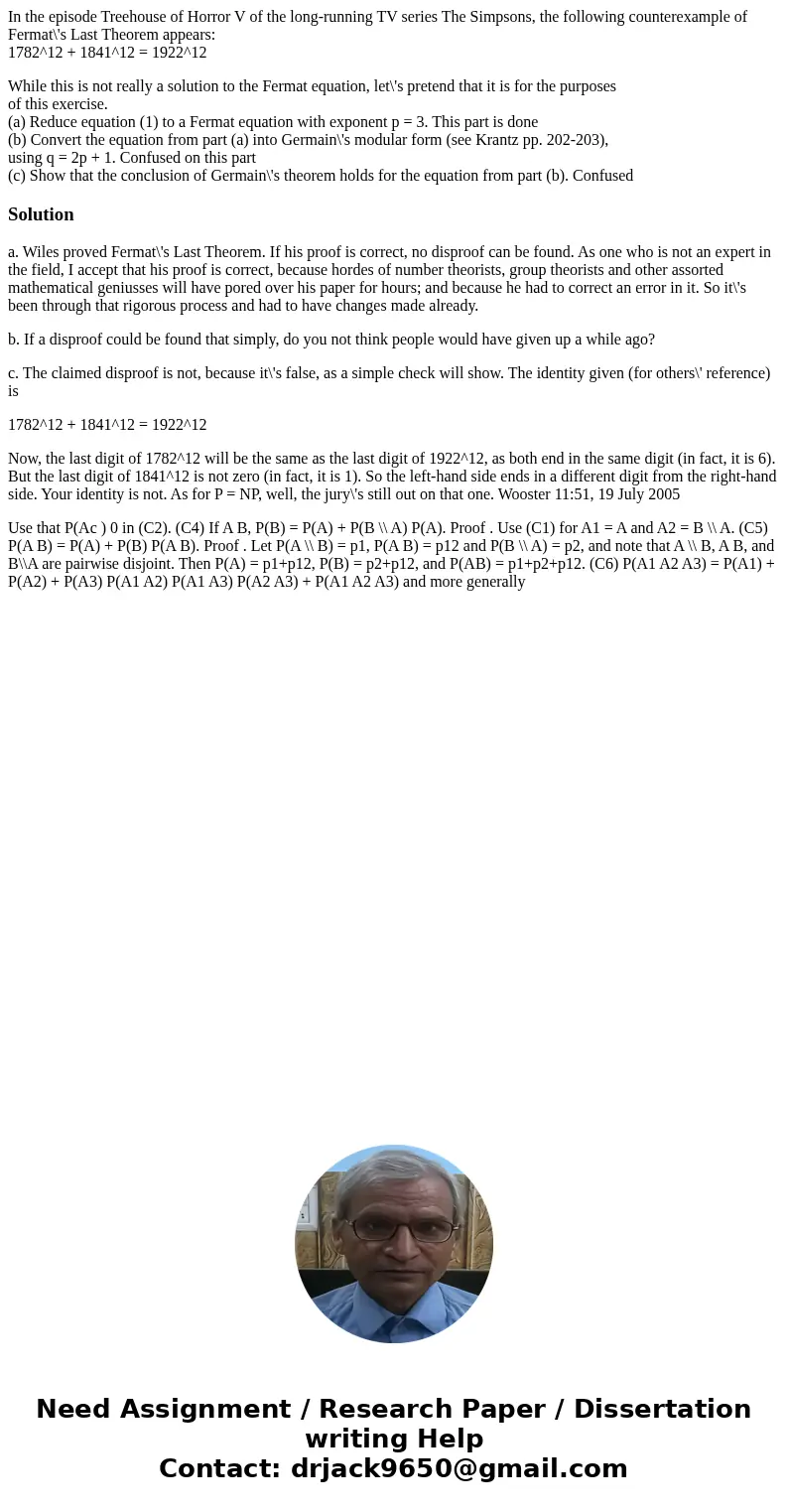In the episode Treehouse of Horror V of the longrunning TV s
In the episode Treehouse of Horror V of the long-running TV series The Simpsons, the following counterexample of Fermat\'s Last Theorem appears:
1782^12 + 1841^12 = 1922^12
While this is not really a solution to the Fermat equation, let\'s pretend that it is for the purposes
of this exercise.
(a) Reduce equation (1) to a Fermat equation with exponent p = 3. This part is done
(b) Convert the equation from part (a) into Germain\'s modular form (see Krantz pp. 202-203),
using q = 2p + 1. Confused on this part
(c) Show that the conclusion of Germain\'s theorem holds for the equation from part (b). Confused
Solution
a. Wiles proved Fermat\'s Last Theorem. If his proof is correct, no disproof can be found. As one who is not an expert in the field, I accept that his proof is correct, because hordes of number theorists, group theorists and other assorted mathematical geniusses will have pored over his paper for hours; and because he had to correct an error in it. So it\'s been through that rigorous process and had to have changes made already.
b. If a disproof could be found that simply, do you not think people would have given up a while ago?
c. The claimed disproof is not, because it\'s false, as a simple check will show. The identity given (for others\' reference) is
1782^12 + 1841^12 = 1922^12
Now, the last digit of 1782^12 will be the same as the last digit of 1922^12, as both end in the same digit (in fact, it is 6). But the last digit of 1841^12 is not zero (in fact, it is 1). So the left-hand side ends in a different digit from the right-hand side. Your identity is not. As for P = NP, well, the jury\'s still out on that one. Wooster 11:51, 19 July 2005
Use that P(Ac ) 0 in (C2). (C4) If A B, P(B) = P(A) + P(B \\ A) P(A). Proof . Use (C1) for A1 = A and A2 = B \\ A. (C5) P(A B) = P(A) + P(B) P(A B). Proof . Let P(A \\ B) = p1, P(A B) = p12 and P(B \\ A) = p2, and note that A \\ B, A B, and B\\A are pairwise disjoint. Then P(A) = p1+p12, P(B) = p2+p12, and P(AB) = p1+p2+p12. (C6) P(A1 A2 A3) = P(A1) + P(A2) + P(A3) P(A1 A2) P(A1 A3) P(A2 A3) + P(A1 A2 A3) and more generally

 Homework Sourse
Homework Sourse